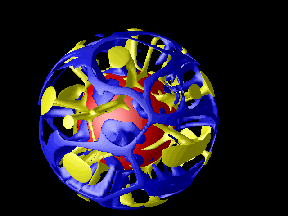
What forces would lead to the movement of the plates over the surface of the earth? At this time it is believed this movement results from mantle convection. Mantle convection is the driving mechanism for plate tectonics.
Although the surface of the Earth is solid, its interior is soft and flows like a very viscous fluid. This flow, called mantle convection, is an important method of heat transport within the Earth.
So, mantle convection is the slow creeping motion of Earth's rocky mantle caused by convection currents carrying heat from the interior of the Earth to the surface.
Deep within the earth there is a large amount of heat coming from two sources: the magma and radiation from radioactive elements. This heat must flow to a cooler place, and subsequently rises to the surface of the Earth. If the Earth were smaller, this heat would flow by conduction, but because of the relatively large size of the Earth, convection also takes place. Thus, as in heating a pot of water on a stove, convection currents are established within the earth, which bring warm material to the surface and send cooler material to the interior.
The Earth's surface lithosphere, which rides atop the asthenosphere, is divided into a number of plates that are continuously being created and consumed at their opposite plate boundaries. Accretion occurs as mantle is added to the growing edges of a plate, usually associated with seafloor spreading. This hot added material cools down by conduction and convection of heat. At the consumption edges of the plate, the material has thermally contracted to become dense, and it sinks under its own weight in the process of subduction at an ocean trench.
This subducted material sinks to a depth of 660 kilometers in the Earth's interior where it is impeded from sinking further, possibly due to a phase change from spinel to perovskite and magnesiowustite, an endothermic reaction.
The subducted oceanic crust triggers volcanism, although the basic mechanisms are varied. Volcanism may occur due to processes that add buoyancy to partially melted mantle causing an upward flow due to a decrease in density of the partial melt.
Secondary forms of convection that may result in surface volcanism are postulated to occur as a consequence of intraplate extension and mantle plumes.
The time scale involved for rocks to rise from the lower mantle to the surface, get cooled, and return to the interior is estimated to be around 200 million years. The resulting convection currents around the earth's surface is thought to be the driving force behind the movement of the plates.

